Last week a number of interviews given by Energy and Emissions Reductions Minister Angus Taylor suggested first that the Government is bent on investing in gas projects to provide more “cheap energy” to the market to help lead recovery from COVID-19; and then that the falling price of gas during COVID-19 could be used to support fast-start gas plants that help bring more renewable energy into the grid.
“More gas means more capacity to absorb renewables, because gas is flexible, dispatchable generation,” Taylor told the Sydney Morning Herald over the weekend.
Like so many Government statements, this resonates because it is half right, but analysts and at least one independent politician disagree that more Australian gas production is needed to support transition.
“I would strongly question that thinking, because at this point there does not appear to be a commercial or market viability,” to investing in gas projects, Independent MP for Warringah, Zali Steggall told pv magazine.
Steggall, whose Climate Change bill was postponed until parliament resumes sitting and until the immediate crisis posed by COVID-19 have been dealt with, points out that with recession looming, “We’re going to need economic stimulus and there is an absolute obligation that that stimulus can’t be used to prop up technologies on an ideological basis.”
The stimulus, she says, must be aimed at “markets, technologies and industries that have a future”.
Don’t put wealth generation in the hands of losers
Bruce Robertson, Energy Finance Analyst for Gas/LNG at the Institute for Energy Economics and Financial Analysis (IEEFA) emphatically agrees with Steggall, telling pv magazine, “The surest way to destroy national wealth is to back industries that are proven losers.”
In a new plain-speaking podcast on the subject, he cites write offs since 2014 by major onshore coal-seam gas producers, Santos (nearly $7 billion), Origin Energy ($3 billion plus) and BG Group ($5 billion) as evidence that onshore gas is a proven loser; and adds falling share prices over the past 10 years of such oil and gas companies as further evidence that “they’ve demonstrably destroyed wealth for their shareholders”.
At the same time, he agrees with Taylor on a couple of points: firstly, that gas peakingplants — open-cycle gas turbines that can fire up rapidly — have a place in supporting increasing proportions of solar and wind generation in the grid, because they provide instantly dispatchable electricity supply at times of low renewable resource.
That said, “Gas peaking plants have big capacity, but they don’t have to operate very often,” says Robertson, so they don’t need a lot of gas.
And he points out that, “There is already enough gas in Australia to supply our local economy three times over, yet gas companies are selling that supply overseas”, while paying no royalties for extraction, and paying minimal tax in Australia, and simultaneously selling gas in Australia at a much higher price than they do to overseas buyers.
The world is swimming in gas
COVID-19 has of course thrown energy markets into turmoil, but there was already a global gas glut. As a result, gas prices have fallen in Australia, AEMO reports, from $9.75 per gigajoule in the first quarter of 2019 to $5.63/GJ in the same quarter this year.
Since COVID-19 really took hold in April, travel bans have caused a virtual global shut-down in demand for oil and gas, and prices of both fossil fuels have taken a precipitous drop to rock bottom, which is not reflected in local gas prices.
The reasons why electricity consumers and manufacturers on the east coast have been forced to pay higher gas prices since coal-seam-gas-to-LNG projects began on the east coast in 2014, seem Machiavellian.
You couldn’t make it up
Essentially, says Robertson, the small number of east-coast gas producers, with strong ties — he calls it a revolving door between ministers and the gas industry — to government, and which make substantial donations to both the Labor and Liberal parties, have since 2014 been allowed to set domestic gas prices; and although spot prices for gas are public knowledge, the long-term gas contracts between gas producers and energy retailers, and which influence the cost of energy in the National Electricity Market (NEM) are not available for scrutiny.
Robertson told pv magazine, “The gas ‘market’ is a unicorn. It simply does not exist.” What we clearly have, he says, is a cartel that is enabled by beholden political parties to operate in its own interests.
The second point on which Robertson agrees with Taylor is that Australians should have access to gas supplies at cheaper prices, both for electricity generation to the grid, and for manufacturing products such as fertiliser.
In February this year, the Australian Competition and Consumer Commission (ACCC) reported, “Commercial and industrial gas users have continued to try to reduce their overall gas costs, but most have reported that they have largely exhausted all opportunities to reduce their gas use through energy efficiency improvements.”
Chair of the Commission, Rod Sims commented, “Unfortunately, the concerning trend of companies closing regional manufacturing plants that are now unprofitable due to high gas prices has continued.”
The alternative to producing essential products such as fertiliser and bricks for building in Australia using gas, is to import the final product from countries where gas is cheaper, which leaves Australia expending huge amounts of electricity on liquefaction of natural gas, using fuel to ship the gas overseas, and fuel to bring the final product back to Australia, with a net loss of local jobs. Total emissions generated by this shuttling of fuel and product are of course also higher than if those products were manufactured onshore.
Although government has no role in properly functioning markets, Robertson says the Australian Government has severely let Australians down by enabling the east coast gas cartel. In an IEEFA statement released last week, he echoed large numbers of other analysts and commentators in calling for “a domestic gas reservation policy to protect our manufacturers and the need for greater transparency surrounding contract prices for gas”.
“It does not require government money,” or increased supply of onshore gas, “to achieve reasonable gas prices,” he says.
Renewables provide a note of optimism
In an energy market so skewed by the manipulated pricing of gas — a significant, if declining, component of energy supply — and government subsidy of coal, renewables continue to shine, and the dire outlook for oil and gas is reflected in the cost of finance to each form of generation. That the ever declining cost of renewable plant build is its main financial ask puts it ahead.
“It doesn’t cost to access the wind or access the sun,” says Robertson, while gas and coal generation must cover the costs of plant and of fuel supply.
He cites the mid-COVID pushing through of investment by Acciona in its more than 1 GW MacIntyre wind project, and the Genex signing of a power purchase agreement with Energy Australia, “that will almost certainly mean its Kidston pumped-hydro, wind and solar project will go ahead”, as evidence of continued financial confidence in the future of renewable generation.
At the same time Exxon Mobil, “the biggest, hairiest gorilla in the room”, according to Robertson, has suffered a recent credit downgrade. “Banks are withdrawing finance from oil and gas companies, so their costs are going up while renewables’ costs are going down,” he says.
Cooking Australia with gas
On 21 April, Minister Taylor told The Sydney Morning Herald and The Age, that the government was looking to invest in gas projects to provide more cheap energy. He said, “Gas already plays an essential role in energy reliability, but it could be even more important through a gas-fired recovery.”
It’s not clear whether he is referring to gas-extraction projects, gas-peaking plants — such as have been shortlisted for the Government’s Underwriting New Generation Investment (UNGI) program — or plans for an expanded gas-import terminal at Port Kembla in NSW (also shortlisted for UNGI).
But with Arrow Energy set to commence its $10 billion Surat gas project later this year, which will produce 90 billion cubic feet of gas per annum; and Gladys Berejiklian’s NSW Liberal Government having signed an agreement with Scott Morrison in January to increase gas production in the state by 70 petajoules a year; and Taylor having said he wants to replicate that deal in other states, increased gas flow is already guaranteed — along with fugitive emissions created during its extraction.
“You only need fugitive emissions of 2-3%, above which gas becomes worse than coal in terms of greenhouse gas emissions,” says Robertson, who adds that fugitive emissions are usually estimated by the industry rather than actually being measured. Although Australia’s Commonwealth Scientific and Industrial Research Organisation (CSIRO) recently measured emissions from some 43 CSG wells in Queensland and NSW and found them to be “very low” (no figure is provided), the agency points out that its study is encompasses less than one per cent of Australian CSG wells.
Despite the fact that gas gives off around half the emissions of coal when burned to generate electricity, Robertson says, “This idea of gas being a transition fuel? It’s just another fossil fuel. In some cases it has lower emissions and in others it has higher emissions than coal.”
Robertson asserts that, “Investing in gas in Australia is an unrealistic idea when oil prices are in the bin — the product is entirely uneconomic.” He asks how further investment in a losing industry will get Australia out of the COVID-induced economic hole?
What does the electorate want?
Steggall knows she has her electorate’s mandate to fight for a clean-energy future for Australia, having campaigned and won on the issue at the last Federal Election, and based on a subsequent survey she did in which 5,000 people in Warringah responded; 80% of whom gave environmental issues as their No. 1 priority.
She told pv magazine she wants to see the government’s much touted technology roadmap to emissions reduction unveiled when parliament resumes, and that it be rolled into any stimulus package, in recognition of the fact that Australia needs to get bang for its borrowed billions of bucks, so proposed solutions and benefits need to be aggregated and considered in total.
Steggall is also calling for the National Covid-19 Coordination Commission (NCCC) — one of the Government-backed voices for a gas-led recovery — to add to its skill set. She says the current Commission is made up of “very reputable people”, but that areas such as “food and water security, regional development, climate and health” are not represented, and she’ll propose that the Commission be expanded to include such expertise.
She adds, “I have no doubt that the fossil fuel industry is lobbying the government hard to get a big share of the recovery stimulus. There’s always talk of ‘deregulating’ that comes with cutting so-called green tape,” which she says is shorthand for “ransack the environment for a quick buck”.
Any economic stimulus packages must represent far better and more future-focused economic management than that, says Steggall. They will have to tick several boxes, including long-term jobs creation; low emissions and a market for the products they create.
“I think gas is an ideological choice, not an economic choice,” she says. “We know we have looming risks from climate change in the next 10 to 20 years. There’s no doubt that a lot of our major economic opportunities are in a green recovery.”
This content is protected by copyright and may not be reused. If you want to cooperate with us and would like to reuse some of our content, please contact: editors@pv-magazine.com.
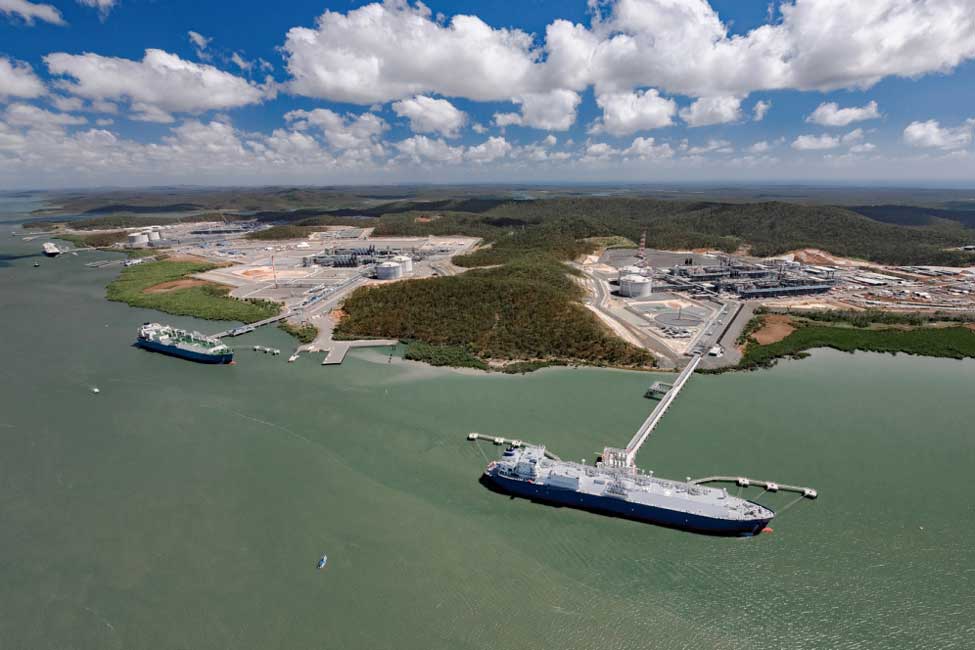



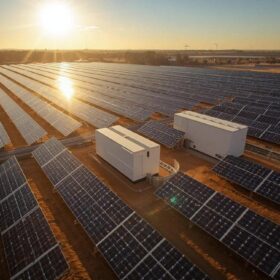
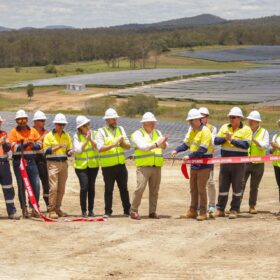
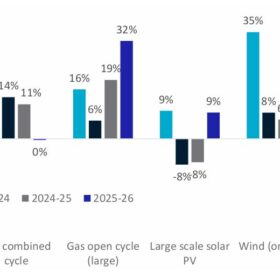

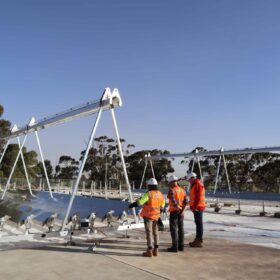
Australia has 3 choices.
1 Ban natural gas
2 Produce it locally
3 import – [LNG import terminals planned for NSW, Vic & SA]
Importing LNG has 20% higher emissions than producing gas locally – due to liquification process.’
What do opponents to the Australian Gas industry choose- You guess it Importing.
It is not about the environment.